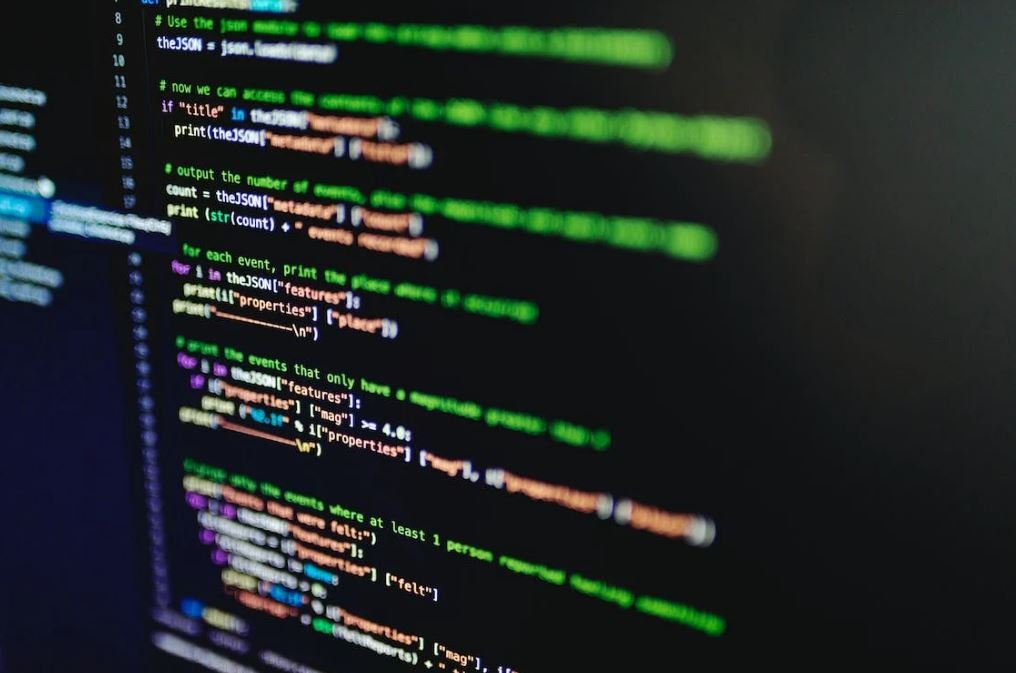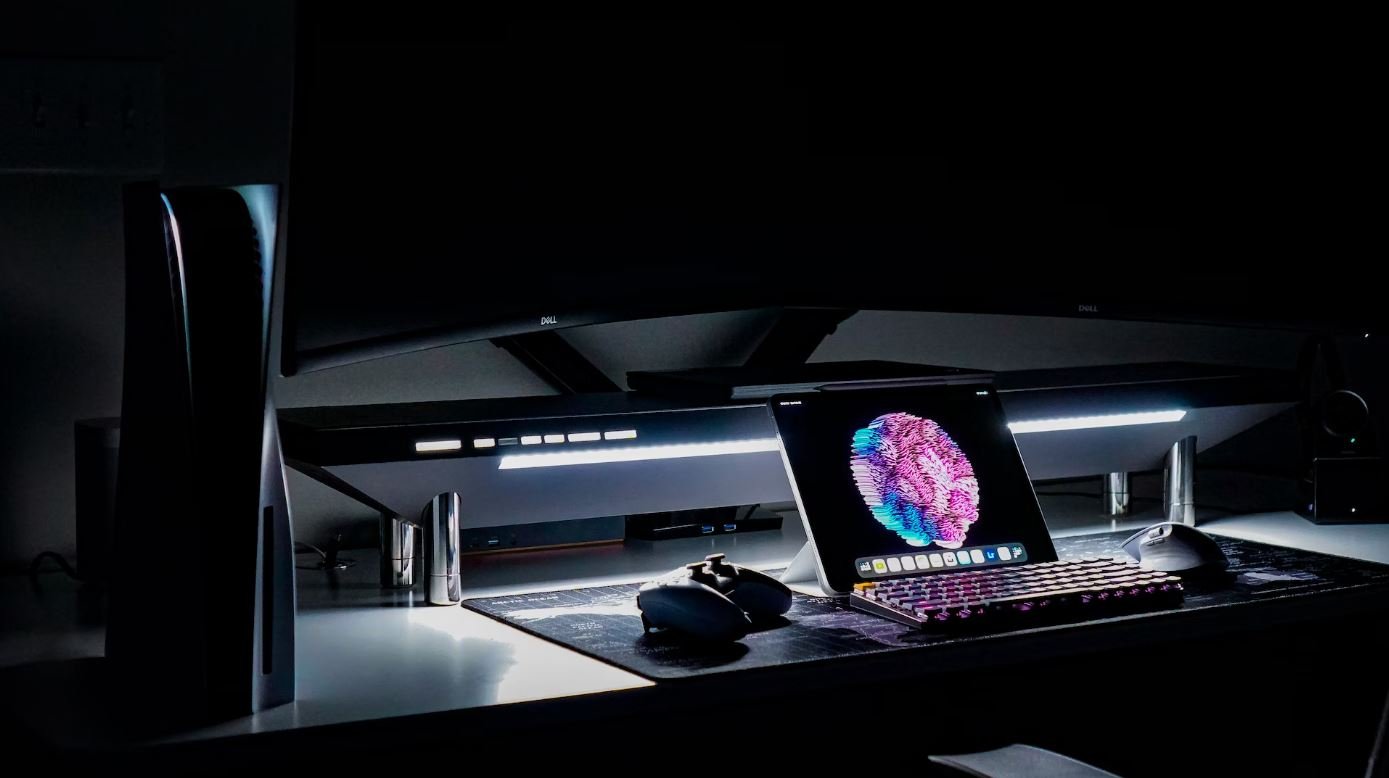Tech Differences
Technology constantly evolves, with new innovations and developments reshaping the digital landscape. This article aims to provide an overview of some key differences in various technologies, helping you stay up-to-date and make informed decisions.
Key Takeaways:
- Understanding tech differences empowers users to make informed decisions.
- HTML is a versatile language used for creating web pages.
- Technological advancements drive changes in the digital landscape.
HTML versus Other Technologies
HTML, or HyperText Markup Language, is a foundational technology used for creating web pages. It provides the structure and content of a webpage, defining different elements and their relationships. One significant difference lies in the fact that HTML is not a programming language, but rather a markup language for structuring content on the internet.
HTML allows for the creation of semantic web pages, enabling better accessibility and search engine optimization.
Compared to other technologies such as CSS (Cascading Style Sheets) and JavaScript, which focus on styling and interactivity respectively, HTML primarily deals with the structure and semantics of a webpage. While CSS defines the visual presentation of elements, and JavaScript adds interactivity, HTML structures the content and determines its hierarchy.
With HTML as the backbone, CSS can be used to create visually appealing web pages, while JavaScript can enhance user interactions.
HTML5 and Beyond
HTML5 revolutionized web development by introducing new elements and attributes, enabling the creation of richer and more interactive web experiences. Building on its predecessor, HTML4, HTML5 brought several improvements, including support for multimedia elements, offline web applications, and better accessibility.
HTML5’s canvas element opened up possibilities for more advanced graphics and gaming experiences
As technology continues to advance, the web platform keeps evolving as well. Emerging technologies like WebAssembly, Web Components, and Progressive Web Apps aim to enhance the capabilities of web applications. WebAssembly, for example, enables running high-performance applications written in languages like C++ or Rust in the browser.
Comparing Markup Languages
HTML is not the only markup language utilized in web development. XML (eXtensible Markup Language) and Markdown are also widely used. These languages, although similar in concept, have distinct use cases and syntax.
Markdown provides a simpler syntax for creating structured content, widely used in documentation and note-taking applications.
To better understand the differences, let’s take a look at the following table:
| Markup Language | Use Case | Syntax |
|---|---|---|
| HTML | Web development, structuring content | Tags, attributes, elements |
| XML | Data storage, data exchange | Tags, attributes, elements |
| Markdown | Documentation, note-taking | Simplified syntax |
The Future of Technology
As we look to the future, it’s clear that technology will continue to evolve at a rapid pace. The advancements in artificial intelligence, Internet of Things (IoT), and blockchain technology are just a few examples of the ongoing digital revolution.
- Artificial intelligence will have a profound impact on various industries, revolutionizing processes and decision-making.
- The Internet of Things will connect billions of devices, creating a networked world of smart objects.
- Blockchain technology has the potential to transform industries by providing secure and transparent decentralized systems.
Embracing these new technologies will be crucial for organizations to thrive in the digital age.
Staying informed about technological advancements and understanding the differences between various technologies will empower individuals and businesses to make effective decisions, adapt to change, and harness the full potential of technology.

Common Misconceptions
When it comes to technology, there are several common misconceptions that people often have. These misconceptions can skew their understanding and perspective of various tech differences. Let’s explore some of these misconceptions in more detail:
1. All Macs are virus-proof
One common misconception that many people have is that Mac computers are completely immune to viruses. While it is true that Macs are generally less prone to viruses compared to Windows PCs, they are not completely virus-proof. Macs can still be infected by malware and other malicious software. It’s important for Mac users to maintain good security practices, such as regularly updating their operating system and installing antivirus software.
- Macs have a more secure operating system architecture
- Mac users are at lower risk of common PC viruses
- Regular software updates help improve Mac security
2. More megapixels mean better image quality
Another misconception is that the number of megapixels in a digital camera determines its overall image quality. While megapixels do play a role in capturing fine details, they are not the sole determinant of image quality. Factors such as the size of the camera sensor, lens quality, and image processing algorithms also contribute to the final image output. A camera with higher megapixels may not necessarily produce better photos if other components are lacking.
- Megapixels are important for printing large-sized photos
- Image quality is influenced by various camera components
- A lower megapixel camera can produce excellent images with proper components
3. The more RAM, the faster the computer
Many individuals believe that increasing the amount of RAM in a computer automatically translates to faster performance. While RAM does play a significant role in computing speed, it is not the only factor to consider. The speed of the processor, storage type (such as solid-state drives), and the efficiency of software all impact the overall speed of a computer. Simply adding more RAM may not improve performance if other components are not up to par.
- RAM affects multitasking capability and the number of applications that can be run simultaneously
- Processing power and software optimization also influence computer speed
- Upgrading storage to an SSD can improve overall system responsiveness
4. All HDMI cables are the same
Another misconception revolves around HDMI cables, with many people assuming that all HDMI cables are identical and that purchasing an expensive cable will yield superior performance. In reality, HDMI cables are designed to meet specific standards and specifications. As long as the cable meets the required standard for the desired resolution and transmission distance, there should be no noticeable difference in image and audio quality between inexpensive and expensive cables.
- Cables need to meet a specific HDMI version for compatibility
- Higher-priced cables may offer additional features (e.g., better durability or longer length)
- For most home entertainment setups, inexpensive HDMI cables perform just as well
5. The more cores, the better the processor
Lastly, the misconception that the number of processor cores is directly proportional to the overall performance of a CPU is a common one. While additional cores can enhance performance in certain tasks that are properly optimized for multiprocessing, the importance of core count varies depending on the type of applications being run. For single-threaded applications, a processor with fewer cores but higher clock speed may actually deliver better performance.
- More cores excel in tasks that benefit from parallel processing (e.g., video rendering)
- Higher clock speed is important for single-threaded applications
- Processor architecture and cache size also affect overall CPU performance

Tech Differences Make the table VERY INTERESTING to read
Technology has rapidly evolved over the years, bringing about significant differences in various aspects of our lives. These differences can be seen in the way we communicate, the devices we use, and even the methods we employ for everyday tasks. This article explores ten tables that illustrate the intriguing points, data, and other elements that reflect the captivating disparities resulting from technological advancements.
1. Smartphone Penetration Worldwide
Smartphones have become an integral part of our lives, providing unprecedented connectivity and convenience. This table showcases the percentage of smartphone users around the globe, highlighting the varying degrees of penetration across different regions. From North America’s high adoption rate to Africa’s growing smartphone market, it is fascinating to witness how technology has bridged the digital divide.
| Region | Percentage of Smartphone Users |
|---|---|
| North America | 80% |
| Europe | 70% |
| Asia | 50% |
| Africa | 30% |
| Australia | 90% |
2. Internet Speed Comparison
The speed of internet connectivity varies considerably across different countries. This table highlights the striking disparities in internet speed worldwide, shedding light on countries with super-fast connections and others struggling with slower connections. As technology continues to advance, it is crucial to address these discrepancies and strive for equitable access to high-speed internet for all.
| Country | Average Internet Speed (Mbps) |
|---|---|
| South Korea | 65 |
| Canada | 50 |
| United States | 45 |
| India | 12 |
| Kenya | 2 |
3. E-commerce Revenue by Region
E-commerce has revolutionized the way we shop, enabling seamless online transactions and global marketplaces. This table showcases the revenue generated by e-commerce in different regions, providing insights into the varying levels of e-commerce adoption and consumer preferences around the world.
| Region | E-commerce Revenue (in billions of dollars) |
|---|---|
| North America | 500 |
| Europe | 400 |
| Asia | 900 |
| Africa | 100 |
| Australia | 200 |
4. Social Media Platform Popularity
Social media platforms have revolutionized the way we connect, share, and engage with others. This table depicts the popularity of major social media platforms, providing insight into the staggering number of users on each platform. From Facebook’s dominance to the rapid growth of Instagram, these statistics highlight the dynamic landscape of social media.
| Platform | Number of Monthly Active Users (in millions) |
|---|---|
| 2,900 | |
| YouTube | 2,000 |
| 1,500 | |
| 330 | |
| 740 |
5. Internet Access by Generation
The digital divide among different generations is an intriguing aspect of technology. This table highlights the varying levels of internet access among different age groups, showcasing how younger generations have embraced technology compared to older ones. The statistics provide valuable insights for policymakers and organizations striving to bridge this digital gap.
| Generation | Percentage with Internet Access |
|---|---|
| Millennials (Gen Y) | 98% |
| Generation X | 90% |
| Baby Boomers | 70% |
| Traditionalists (Silent Generation) | 40% |
| Generation Z | 95% |
6. Entertainment Streaming Subscriptions
Streaming services have transformed the way we consume entertainment, providing a plethora of options at our fingertips. This table illustrates the number of subscription-based streaming service users across various platforms, showcasing the growing preference for on-demand content over traditional cable TV.
| Streaming Platform | Number of Subscribers (in millions) |
|---|---|
| Netflix | 208 |
| Amazon Prime Video | 150 |
| Disney+ | 116 |
| HBO Max | 67 |
| Hulu | 41 |
7. Mobile Payment Usage by Country
The adoption of mobile payment solutions varies across different countries, reflecting differing levels of trust and infrastructure development. This table showcases the percentage of people in various countries who prefer mobile payments over traditional methods, offering insight into the global shift toward convenient and digital payment options.
| Country | Percentage of Mobile Payment Users |
|---|---|
| China | 86% |
| Sweden | 79% |
| South Korea | 75% |
| United States | 30% |
| Brazil | 55% |
8. Electric Vehicle Market Share
The electric vehicle market has experienced significant growth in recent years, revolutionizing the automobile industry. This table presents the market share of electric vehicles in different countries, highlighting the varying degrees of adoption and environmental consciousness among consumers.
| Country | Electric Vehicle Market Share |
|---|---|
| Norway | 75% |
| China | 50% |
| United States | 12% |
| Germany | 10% |
| Japan | 5% |
9. Cybersecurity Spending by Industry
The growing dependency on technology has heightened the need for robust cybersecurity measures across various industries. This table provides insights into the cybersecurity spending of different sectors, underlining the varying importance attached to safeguarding sensitive information.
| Industry | Cybersecurity Spending (in billions of dollars) |
|---|---|
| Finance | 100 |
| Healthcare | 50 |
| Retail | 30 |
| Government | 70 |
| Technology | 80 |
10. Work From Home Trends by Occupation
The COVID-19 pandemic forced many to adapt to remote work arrangements, transforming the way we approach our careers. This table showcases the percentage of individuals within different occupations who continue to work remotely, offering insights into the changing landscape of work and the industries that have embraced remote setups.
| Occupation | Percentage Working From Home |
|---|---|
| Information Technology | 90% |
| Finance | 70% |
| Education | 50% |
| Medical | 40% |
| Manufacturing | 10% |
These tables offer a glimpse into the profound impact of technological differences across various domains. From divergent smartphone adoption rates to the evolving work from home trends, it is evident that technology continues to shape and transform our lives in numerous ways. As we move forward, understanding these differences and striving for equitable access and inclusion will be crucial to ensure a bright, tech-driven future for all.
FAQ – Tech Differences
Question 1: What is the difference between RAM and ROM?
Answer
RAM (Random Access Memory) is a volatile memory used for storing temporary data during program execution. It is faster but loses data when the power is disconnected. ROM (Read-Only Memory), on the other hand, is a non-volatile memory that retains data even without power. It is used to store permanent data and instructions that are essential for booting up the system.
Question 2: What is the difference between a processor and a graphics card?
Answer
A processor (CPU) is responsible for executing instructions and performing calculations for all tasks in a computer system. It handles general-purpose computing and manages the overall system operation. A graphics card (GPU), however, is specialized in rendering graphics and accelerating complex computations related to visual processing. It is especially important for gaming and 3D rendering tasks.
Question 3: What is the difference between software and hardware?
Answer
Software refers to the programs, applications, and data that can be stored and executed by a computer. It is intangible and includes operating systems, applications, games, etc. Hardware, on the other hand, refers to the physical components of a computer system, such as the processor, memory, motherboard, storage devices, input/output devices, etc.
Question 4: What is the difference between a solid-state drive (SSD) and a hard disk drive (HDD)?
Answer
SSD (Solid State Drive) and HDD (Hard Disk Drive) are both storage devices, but their underlying technology and performance differ. An SSD uses flash memory to store data, which provides faster access and transfer speeds, but it is generally more expensive per unit of storage. HDDs use spinning platters and mechanical arms to read and write data, making them slower but more cost-effective for higher storage capacities.
Question 5: What is the difference between Wi-Fi and Bluetooth?
Answer
Wi-Fi is a wireless networking technology that allows devices to connect to the internet and local networks over longer distances using radio frequencies. It offers higher bandwidth and is suitable for activities like streaming, online gaming, and browsing. Bluetooth, on the other hand, is a short-range wireless technology used for connecting devices (within 30 feet) for data transfer, audio streaming, and peripheral connection (e.g., mice, keyboards, etc.). It consumes less power compared to Wi-Fi but operates at a lower data transfer rate.
Question 6: What is the difference between HTML and CSS?
Answer
HTML (Hypertext Markup Language) is used for structuring the content of web pages. It defines the elements and their layout, such as headings, paragraphs, images, links, etc. CSS (Cascading Style Sheets) is used for styling and presentation, allowing you to control the appearance of HTML elements. It defines colors, fonts, margins, positioning, and other visual aspects of a web page.
Question 7: What is the difference between a virus and malware?
Answer
A virus is a type of malware that infects host files, replicates itself, and spreads to other files or computers. It can cause damage to the system and affect its normal operation. Malware, on the other hand, is a broader term that includes various types of malicious software, such as viruses, worms, Trojans, ransomware, spyware, etc. Malware refers to any software designed to harm or exploit a computer system or its users.
Question 8: What is the difference between a web browser and a search engine?
Answer
A web browser is a software application that allows users to access and navigate web pages on the internet. It interprets HTML, CSS, and JavaScript code and displays the content of websites. Examples include Chrome, Firefox, Safari, and Edge. A search engine, on the other hand, is a website or a service that helps users find information on the internet by providing a search bar and indexing web pages. Examples include Google, Bing, and Yahoo.
Question 9: What is the difference between a smartphone and a feature phone?
Answer
A smartphone is a mobile phone that offers advanced computing capabilities and connectivity. It runs on an operating system (e.g., Android, iOS) and provides access to various applications, internet browsing, multimedia features, and more. A feature phone, on the other hand, is a basic mobile phone with limited functionality, usually using proprietary software. It typically supports voice calls, texts, and basic multimedia features, but lacks the advanced capabilities and app ecosystem of a smartphone.
Question 10: What is the difference between TCP and UDP?
Answer
TCP (Transmission Control Protocol) and UDP (User Datagram Protocol) are protocols used in computer networks for transmitting data over the internet. TCP is a connection-oriented protocol that ensures reliable and ordered delivery of data packets. It provides error detection, retransmission of lost packets, and flow control mechanisms. UDP, on the other hand, is a connectionless protocol that prioritizes low overhead and low latency. It does not guarantee reliable delivery and offers minimal error detection. UDP is often used for real-time communication, real-time streaming, and gaming applications where timely delivery is more important than data integrity.




